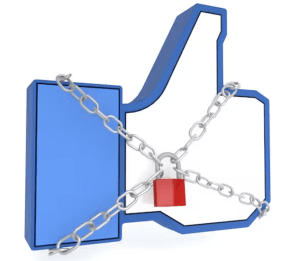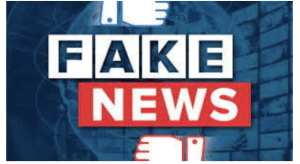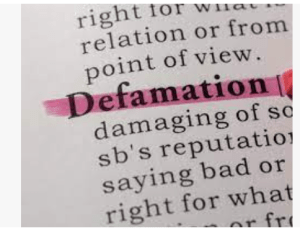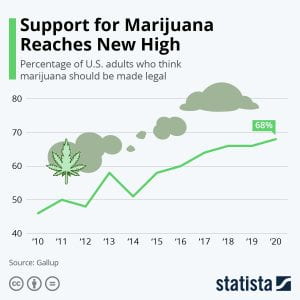In today’s professional sports economy, player value stretches far beyond the box score. Teams routinely factor in off-field elements like branding power, media influence, and fan engagement, all forces that can generate revenue and mold a franchise’s cultural footprint. Nowhere is this more apparent than in celebrity-athlete relationships. Even online platforms are quick to recognize and take advantage of the online popularity these celeb romantic entanglements bring. As the example of Travis Kelce and Taylor Swift’s relationship continues to demonstrate: the market impact of a high-profile pairing can be immediate and measurable.
As legal scholars have long recognized, identity itself carries market power. But as this trend grows, a new question emerges: should front offices actually weigh an athlete’s relationship status with a celebrity when determining their acquisition cost or contract value? Should their total compensation package reflect the marketing value they add with their romantic partner? Or does this blur the lines between sports performance, entertainment economics, and personal boundaries of public figures? Attempting to answer these questions requires us to take a closer look at where sports economics meets publicity rights, using real life examples, while exploring how courts already understand fame, identity, and commercial value.
The “Swift Effect”
Travis Kelce and Taylor Swift’s relationship didn’t just dominate celebrity headlines, it signaled a new wave in the business of professional football. Swift’s first appearance at Arrowhead Stadium in September 2023 triggered a viewership surge unlike anything the league had seen. In the days following that game, the NFL posted about Swift 34 times across its social channels, generating 170 million impressions, while Kelce’s jersey sales skyrocketed 400% and the Chiefs added over 200,000 new Instagram followers (and counting). What initially looked like a cultural crossover moment quickly became an economic engine.
The impact reverberated across fan demographics. Female viewership (especially among 18 to 24 year-olds) jumped dramatically, helping push Super Bowl LVIII to a record 123.7 million average viewers, fueled by a 24% spike in young women tuning in. Over the year, more than four million new female fans entered the NFL market, with an estimated 3.4 million joining Chiefs Kingdom alone. Chiefs owner Clark Hunt later confirmed the shift: the team’s fan base, once evenly split, now skews 57% female, a change he directly attributes in part to Swift’s presence.
But what’s fascinating from a legal lens is how closely this real-world moment mirrors how courts talk about fame. American case law has long acknowledged that public figures carry commercial value simply by being who they are. In Haelan Laboratories v. Topps, the Second Circuit coined the “right of publicity,” recognizing a person’s identity as a monetizable asset. In today’s example: Swift doesn’t just bring market attention, she expanded the economic value of Kelce’s identity, making the Chiefs more valuable as a brand. And let’s not forget when she gave Kelce a cameo on her record-breaking Era’s Tour, adding even more buzz around the tight end’s name. It’s the exact kind of commercial effect the law already takes seriously.

So what does all this data tell us? While the star-impact of Swift is solely responsible for the Chiefs increased cultural and economic footprint, none of that would exist without her relationship to Kelce. Does this justify valuing Kelce differently in contract negotiations or trade considerations? Is his relationship status part of his “brand” or commercial identity just as his stats are?
The Rise of the “Social Value” Metric
While celebrity relationships can supercharge visibility, the underlying trend they highlight is much broader: player value today increasingly hinges on social value: a measurable combination of marketability, audience reach, and cultural influence. Front offices across major sports already factor in off-field metrics when evaluating players, from jersey sales and endorsement potential, to social media followings. In many ways, the modern athlete functions not only as a performer on the field, but also as a content generator and brand ambassador whose visibility can meaningfully shift a team’s revenue streams.
This evolution mirrors the name image likeness (NIL) marketplace that has reshaped college athletics. At the collegiate level, brand value is often as decisive as on-field talent: athletes at high-profile programs, or those with massive online followings, routinely secure lucrative deals even before going pro. Cases like O’Bannon v. NCAA and Alston established what the NCAA resisted for decades: that athletes don’t just produce wins, they produce value. They bring in viewers, marketing opportunities, and they drive revenue in ways that transcend play-calling and stat sheets. The logic is straightforward: audience attention translates to commercial worth.
This framework translates seamlessly into professional sports. Under these principles, a celebrity partner becomes an extension of an athlete’s brand infrastructure. Their combined platforms can amplify visibility beyond traditional sports audiences, turning athletes into crossover figures who occupy cultural spaces far removed from their sport. A player’s social media following, endorsement profile, or crossover appeal can boost a team’s national visibility or open new global markets. It’s not hypothetical. Teams measure this, agents negotiate it, and brands pay for it.
But this shift also raises an important practical dilemma: if teams increasingly consider social value in roster decisions, where is the line between evaluating a player as a commercial asset and respecting boundaries around personal identity and private relationships? The growing influence of off-field marketability suggests that the future of athlete valuation will be shaped not only by performance analytics, but also by cultural fluency. This trend is consistent with past court decisions regarding the right of publicity and the true value the holder of that right has in the case of celebrities.
The Power-Couple Premium
Kelce and Swift may be the headline act, but they are far from the only pairing showing how quickly an athlete’s public life can spill into a team’s market calculus. Take Klay Thompson and Megan Thee Stallion. On paper, the NBA and hip-hop worlds have always overlapped, but seeing a high-caliber athlete enter that level of mainstream pop culture creates a whole new kind of crossover. With a celeb like Megan Thee Stallion in floor seats at a Dallas Mavericks game, fans of the Grammy-award win ner are bound to tune in or perhaps pay more for premium seating for a chance to get a first-hand view of the star. And let’s not forget the reciprocity of the celebrity-athlete partnership: only a few months after making their relationship public, the singer scored a new sponsorship deal with Fanatics Sportsbook – an official sponsor of the NBA.
ner are bound to tune in or perhaps pay more for premium seating for a chance to get a first-hand view of the star. And let’s not forget the reciprocity of the celebrity-athlete partnership: only a few months after making their relationship public, the singer scored a new sponsorship deal with Fanatics Sportsbook – an official sponsor of the NBA.
The same dynamic is found in the relationship between Stefon Diggs and Cardi B. Her presence alone brings a massive online audience. A single game appearance or Instagram post becomes a multi-media event, and within hours you see it reflected everywhere from jersey sales, to internet hashtags. It’s the kind of cultural bleed-over front offices pretend not to notice, even though the revenue streams speak for themselves. It’s not that these players become “more valuable” overnight in a traditional sense, but their teams undeniably get swept into a bigger cultural orbit.

From a legal standpoint, that visibility is not just “noise.” It’s part of the commercial persona that courts protect under the right of publicity. In her lawsuit against Samsung, Vanna White prevailed on her argument based on California’s statutory right of publicity. The Ninth Circuit reasoned that a person’s NIL or commercial identity extended to the broader concept of one’s identity. The court held that Samsung violated the statute even without using her name or image, but because it used the idea of her. This case underscores the courts’ recognition that association itself creates commercial value. Something that professional sports leagues are already aware of as demonstrated by years of lucrative brand-deals and partnerships.
Trouble in Paradise: Risks of Monetizing Personal Relationships
Once you start looking closely at the way these relationships shape fan interest and team economics, it becomes hard to ignore a slightly uncomfortable truth: that there’s a fine line between recognizing and rewarding marketability, and commodifying someone’s personal life. Courts have made clear that a person owns the commercial value of their identity. But what about the commercial value of a relationship? What about their romantic partner’s identity? And what happens when teams start using those dynamics to justify contract decisions?
 On one hand, it’s easy to see why teams are tempted to lean in. When an athlete’s significant other can open the door to new audiences or bring an entirely different demographic into the market, that’s real, tangible value. It can mean higher ticket demand, more national airtime, stronger sponsorship interest. In a business as competitive as professional sports, where front offices are constantly searching for any kind of edge, ignoring that kind of upside feels naïve in today’s golden age of social media.
On one hand, it’s easy to see why teams are tempted to lean in. When an athlete’s significant other can open the door to new audiences or bring an entirely different demographic into the market, that’s real, tangible value. It can mean higher ticket demand, more national airtime, stronger sponsorship interest. In a business as competitive as professional sports, where front offices are constantly searching for any kind of edge, ignoring that kind of upside feels naïve in today’s golden age of social media.
On the flip side, when a player’s personal relationship begins to encroach on contract conversations, suddenly it’s not only about his performance on the field, but also off the field. Front offices now run the risk of causing contractual provisions or other incentives to be based on how much of the player’s private life he’s willing to have consumed by the public. It creates a market-based precedent where a romantic partner isn’t just a companion. That “companion” becomes part of a player’s “brand portfolio” whether or not they want that designation.

And the even bigger risk at the end of this slippery slope? The potential legal consequences teams could face in a cause of action by a celebrity who discovers another party is profiting off of her NIL without first obtaining that celeb’s consent. Or one who finds her commercial identity being used as a bargaining chip in player compensation or trade negotiations.
Legal Stakes in Love
Think about it this way: if there was any evidence of a contract provision between a team and a player, that implicitly or explicitly stated that the player may be compensated for the impact/result of another person’s (celebrity’s) presence, and that person was not a party to the agreement, and thus did not consent to the monetization of her persona…a court could easily recognize an action for appropriation of name or likeness. On the other hand, could the commoditization of a player’s personal relationship be taken as pressure on the athlete from the team to exploit their private lives for value? It seems this risk could move a team dangerously close to the line of unwanted commercial exploitation.
The Price of Love and the Future of Player Valuation

As fun as it is to watch sports and pop culture collide, it’s hard not to wonder where this all could lead, especially from a legal standpoint. If romantic relationships can dramatically shape revenue, influence fan bases, and transform a player’s commercial identity…how long before they quietly shape front-office decisions too? Should they? Where should the legal and ethical boundaries sit between commercial identity, intellectual property, and fair contracting? In a modern sports landscape where we’ve been witness to how a romantic relationship can redefine a franchise’s reach, the real question is no longer whether off-field identity carries monetary value, but how far we’re willing to let that value shape the way athletes are analyzed, compensated, and ultimately valued.







 platform obtains verifiable parental consent or reasonably determines that the user is not a minor. It also bans push notifications and advertisements tied to those feeds between 12 a.m. and 6 a.m. unless parents explicitly consent. The rule making process remains ongoing, and enforcement will likely begin once these standards are finalized.
platform obtains verifiable parental consent or reasonably determines that the user is not a minor. It also bans push notifications and advertisements tied to those feeds between 12 a.m. and 6 a.m. unless parents explicitly consent. The rule making process remains ongoing, and enforcement will likely begin once these standards are finalized.
























